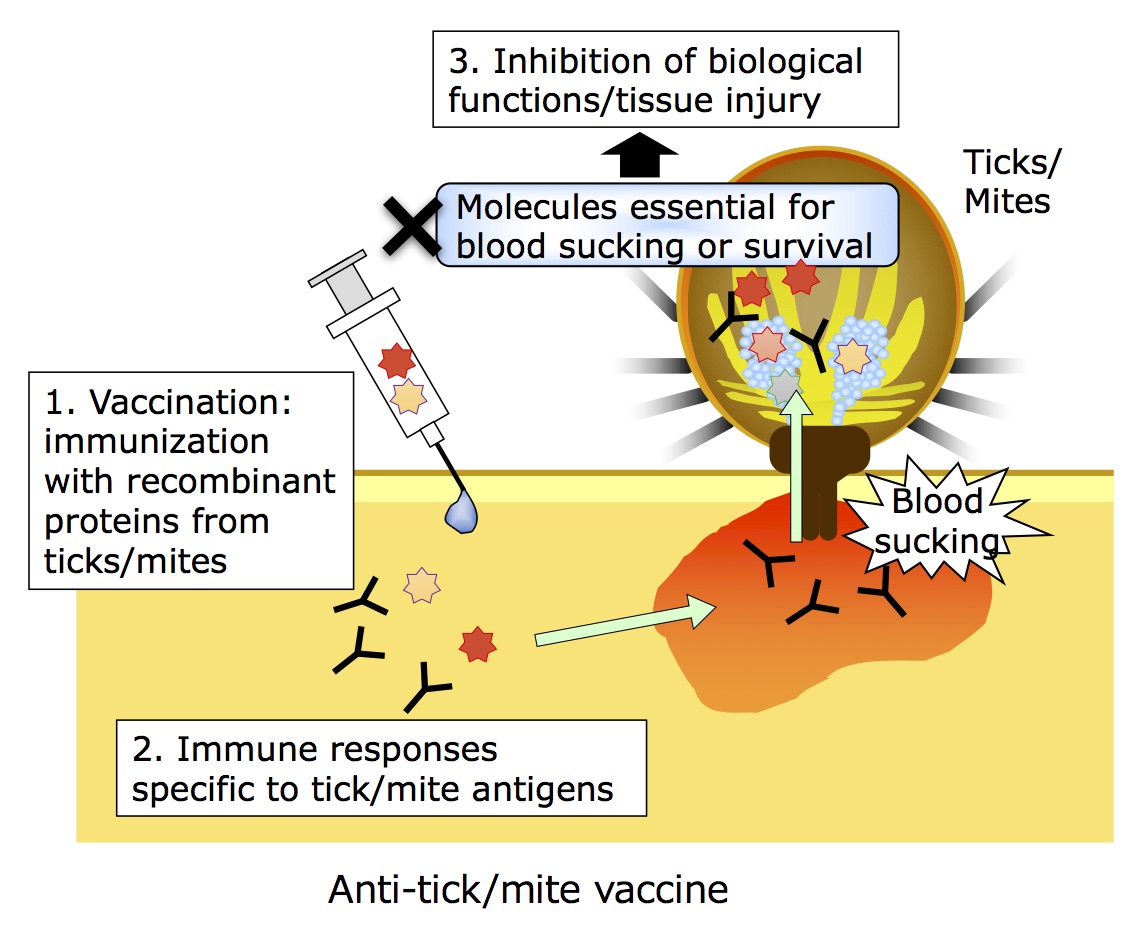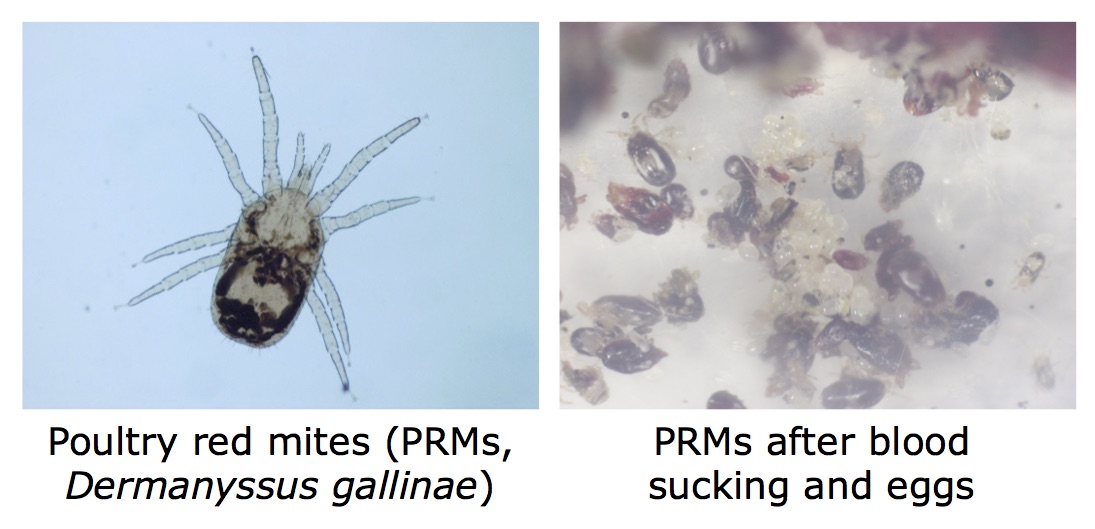Development of anti-tick/mite vaccines
Ticks and poultry red mites (PRMs) are blood-sucking ectoparasites that are a serious threat to public health and animal hygiene. We are currently working on the development of the preventive strategies of these ectoparasites by vaccination.

Problems caused by ticks and the solution
Ixodid ticks are harmful vectors for several pathogens which cause intractable infectious diseases including zoonoses. Acaricides are mainly used to control ticks. However, an alternative control strategy is necessary to reduce chemical residues/environmental pollution and a risk of acaricide-resistance. To solve these problems, we try to develop anti-tick vaccines.
Ticks send various molecules such as immunosuppressive factors and anti-coagulation factors to the hosts to acquire the appropriate environment for blood-feeding, and then the transmission of pathogens is facilitated. Therefore, we focus on molecules present in salivary gland as vaccine candidates, because immune responses induced by vaccination of above molecules could inhibit the functions of tick molecules, and thereby, inhibit blood feeding and possibly prevent the pathogen transmission. In addition, we focus on midgut molecules, and immune responses induced by vaccination of midgut molecules could directly damage tick tissues, and thereby, increase the mortality of ticks more efficiently.
To achieve these objectives, we search for vaccine candidates by comprehensive analysis, investigate the characteristics of these vaccine candidates, and evaluate the tick control effects by experimental vaccination. We also investigate the influence of tick molecules on the pathogen transmission.

Problems caused by poultry red mites and the solution
Poultry red mite (PRM, Dermanyssus gallinae) is a hematophagous ectoparasitic mite of birds and the major pest of poultry farming. Blood sucking by PRMs causes severe anemia, deterioration of health condition and reduced egg production in infested chickens, and therefore, PRMs cause serious economic losses in the poultry industry. In addition, PRMs potentially transmit various pathogens and expand the infection. At present, PRMs are controlled by cleaning poultry houses and by using acaricides, but it is difficult to completely remove them if they hide in cracks. Furthermore, drug-resistant PRMs have been spread worldwide. Thus, a novel method for controlling PRMs is required. To solve these problems, we try to develop anti-mite (PRM) vaccine whose concept is to control PRMs by immune responses against PRM molecules. To achieve it, we search for vaccine candidates, investigate the functions of these proteins, and evaluate the protective efficacy by experimental vaccination. In addition, we try to develop vaccines based on viral vectors toward better immunization practice.

